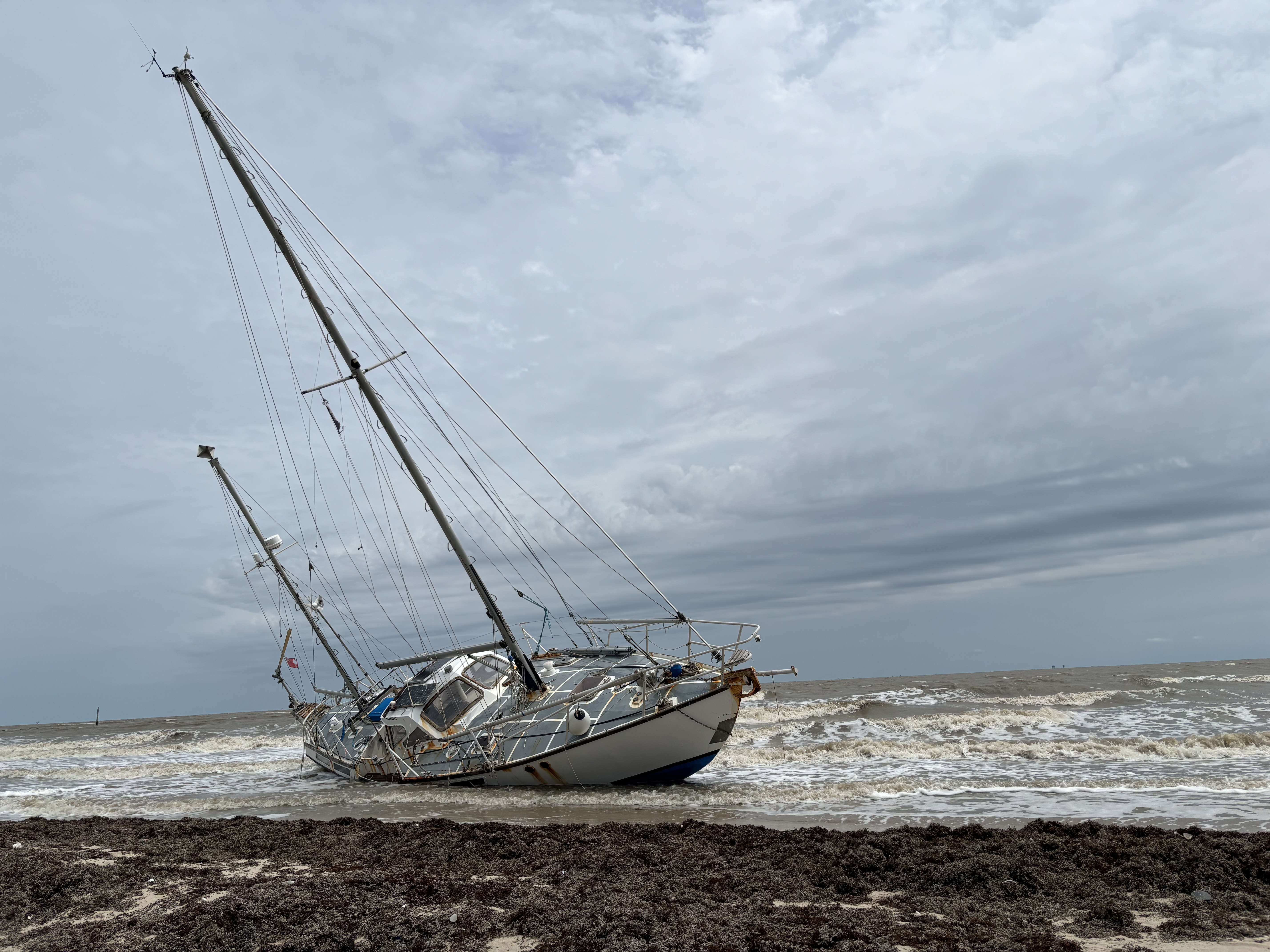Land of fresh fish, roasted lamb and lots of rhubarb
Published 6:00 pm Wednesday, November 1, 2017
Mary Richardson / Special to American Press
“Look at that rhubarb growing by that turf house!” I said to my husband, Joe. “I haven’t seen rhubarb like that since I left Minnesota.”
His eyebrows raised alarmingly.
“Why are you looking at some weed?” he said. “There is an historic example of the type of turf houses built by Iceland’s founding settlers in front of you. Look at that sod! Can’t you just smell burning peat?”
No, I could not. My imagination was busy smelling my mom’s rhubarb pie. And rhubarb cake. And rhubarb sauce.
We had arrived in Iceland in late July to spend two weeks driving counterclockwise around the entire island on the famed Ring Road.
We had booked a self-driving tour with a company called Hey Iceland, which specializes in finding lodging in farms and small inns in out-of-the-way places.
We traded having private bathrooms for the chance to converse with the inn owners and farmers. As a result, we learned how to find the best hiking trails, who made the best ice cream, and where the volcanic-heated pools and rivers were located.
So during the day we hiked to glaciers and touched the ancient ice. We felt the wind and spray of huge waterfalls and even took a trail behind one of them, seeing Iceland through a curtain of noisy water. We saw the steam and bubbling pots of mud where two tectonic plates are pulling Iceland apart. We saw geysers and we bathed in a mountain river of hot, volcanic-heated water.
But when evening came — not sunset, that didn’t happen until after 11 p.m. — we explored the modern Icelandic cuisine. We came to realize that Iceland is not only a land of fire and ice. It is a land of fresh fish, roasted lamb, and lots of rhubarb.
How it all began
Our interest in Icelandic food started slowly. Food is expensive in Iceland! We are “thrifty” tourists, so for the first two days we didn’t go into a single restaurant except for Dunkin’ Donuts (I know, I know, but it was morning and we had just gotten off the plane and were jet lagged). The next two nights we decided we would just pick up a few things in grocery stores and picnic. But ordinary bread, ordinary cheese, peanuts, some cokes and a few cookies cost almost $50. It was expensive and we weren’t eating very well either.
By the third night we were both hungry and tired of cheese and bread. Luckily for us, it was also the night that we checked into a guest house run by the Hólmur family, located near the town of Höfn in the southwest corner of the island.
Our instincts told us this place would be special as soon as we turned off the Ring Road onto a long gravel driveway. A glacier was gleaming in the evening sun, and the farmhouse looked like it was tucked right under it. Two small Icelandic horses grazed in the pasture and an Icelandic goat turned to stare (I swear he was smiling) at us.
We walked past the house and the barn and the petting zoo and found the Jón Ríki Brewery & Restaurant, which turned out to have been remodeled from the family’s old tractor shed. Everything was run by the Hólmurs. The menu was full of local specialities, but what caught my eye was Grilled Pumpkin and Cilantro Soup with homemade sourdough bread.
That soup was was outstanding, and the home brewed beer was delicious. We toasted each other with an $18 imperial stout and formally vowed to stop fretting over prices. We were in Iceland now. We would enjoy it. Cheers!
We stayed three nights. Every day we went exploring, and found a secluded lagoon filled with little icebergs in fantastical shapes. They recommended going to the farm down the road for ice cream. It was $12 for two little scoops. We gulped, but remembered our vow. And really, where else can you find liquorice ice cream?
Each day we made sure we were back at the farmhouse in time for dinner. Joe’s favorite was a local shellfish called langostino which look like clawless tiny lobster.
My favorite was the seafood stew. In Jon Riki’s version, a combination of langostino, mussels and other seafood was cooked in a turmeric infused coconut milk base. He topped it with whipped coconut cream which added a sweet richness to the dish. During the next couple weeks, I ordered seafood soup many times and no two versions were alike. It was always delicious, but never better than this.
Traditional foods
We had read about “traditional” Icelandic food before we arrived. The articles included descriptions of Greenland shark, fermented so as to make it non-poisonous. The smell was said to be horrendous. But we never came across fermented shark on any menu outside of the capitol, Reykevick. We also read that restaurants served dishes made from the cute little puffins we saw on the sea cliffs, but we never saw that either. We decided that “traditional” Icelandic foods like fermented shark and puffin must be tourist gimmicks, however Erica McCreedy had a different experience (see story, page B2).
At a native Icelander’s home, a spread of traditional food was offered, including hot spring rye bread, dried fish, sheep head jam (upper left) and the famed fermented shark (lower right) paired with shots of Brennevin.
The kind of modern Icelandic food we found centered around fish and lamb, and the dessert menu usually included something made from rhubarb.
It was easy to see why lamb is popular — the country has so many sheep it looks like its decorated with confetti. Sheep roam the pastures, the hillsides, the mountain tops, and hiking trails. Road signs make it very clear that if a sheep wanders into the roadway, you yield.
Icelandic sheep are not just any old sheep. They are descendants from the sheep brought over by the Viking settlers in the 9th century. They have not been crossbred, so genetically they are the same today as they were 1,100 years ago.
But, if the sheep haven’t changed, the ways of cooking them certainly have. Traditional roast leg of lamb is almost always on the menu, but so are experiments with lamb kabobs with a variety of seasonings. Sometimes a boned leg of lamp is rolled up with herbs and spices or stuffed with mushrooms and barley. Lamb chops were often traditionally grilled, but one recipe called for marinating the chops in honey, lime and spices. Surely no Viking would ever have thought of that. There is, of course, lamb soup.
The Vikings wouldn’t have been surprised by the other mainstay of modern Icelandic cuisine — fish and seafood. How could they not eat seafood? Beneath the cold Arctic waters there are cod, haddock, monkfish, blue whiting, herring, blue ling (my favorite), the delectable langostino, and more. We saw people fly fishing for salmon and trout in streams. At one guesthouse located right on a trout stream we were served home-smoked trout for breakfast.
And speaking of breakfast — every guesthouse or inn we stayed at served a substantial breakfast and it was always wonderful — sliced cheeses, sliced meats, boiled eggs, salad greens including arugula, cucumbers and tomatoes, fresh fruit, bread, muesli and other cereals, a variety of jams (often homemade). Sometimes there was pickled herring and barley porrage.
There was always yogurt — not just any yogurt, but Icelandic yogurt called Skye. It’s rich and thick, but there’s no fat in it. It’s sweet, but there’s no sugar in it. The creamy texture is between Greek yogurt and soft-serve ice cream. Yet somehow it contains more protein than either American or Greek yogurts. There were usually three kinds — plain, strawberry and a sweeter caramel version. I ate all three, every single day.
When I got home I was pleased to find one type of Icelandic yogurt is now sold in the United States. It’s called Siggi’s. It’s not quite Skyr, but still tasty.
Iceland does not have a huge variety of vegetables. It is too close to the Arctic circle to be able to grow very many. Tomatoes, cucumbers and strawberries are grown in greenhouses heated by thermal power.
Plenty of rhubarb
But one crop never fails — rhubarb. At one farmhouse located only 60 miles from the Arctic circle, the owner said rhubarb was her only consistent crop in her garden. At breakfast we ate her homemade rhubarb jam on toast. That night for dessert I had to choose between rhubarb pudding, rhubarb cake, and rhubarb sauce for. It was difficult.
When we returned to Lake Charles, I decided to make an Icelandic dinner. My menu was seafood soup, roast leg of lamb, potatoes, and rhubarb pie. I used a standard recipe for the lamb and roast potatoes. The recipe for Rhubarb Custard Pie came from my mother, who made it throughout the Minnesota summers. The recipe probably originated from Betty Crocker.
However, I could not find a recipe for Icelandic fish stew. Below is my version of that dish, which may not be authentic. I think I’ll need another trip to Iceland to refine it.
Icelandic Fish Stew with Coconut Whipped Cream
Stew:
- 4 garlic cloves, chopped
- 4 small green chillies, chopped
- 1 tablespoon finely chopped fresh ginger
- 2 tablespoons oil
- 1 onion, finely chopped
- 2 teaspoons turmeric
- 2 teaspoons coriander
- 1 teaspoon ground cumin
- ¼ teaspoon ground cloves
- 6 green cardamon pods, cracked or 1 tsp ground cardamon, or both
- 1 teaspoon sumac (optional)
- juice of two limes
- 3 400-ml can coconut milk, full fat (only one for stew; other two are for whipped garnish)
- 3 cups fish stock or vegetable stock
- 3-4 pounds assorted fish and shellfish, frozen (thaw fish just enough to be able to chop it into large pieces) or fresh (see note)
- 3 lobster tails, meat separated from the shells and chopped in large pieces
Whipped Coconut Milk:
- 2 cans coconut milk, full fat
For stew:
- Chop garlic and onion in a food processor and sauté in oil over medium heat until softened. Add spices (turmeric, coriander, cumin, cloves, green cardamon pods, sumac) and saute until fragrant.
- Add juice of one lime and the stock.
- Simmer for about 10 minutes.
- If using frozen fish, add it. When it returns to a slow boil, cook about 10 minutes.
- If using fresh fish, boil until just cooked through.
- Add lobster meat and boil until translucent.
- Add one of the cans coconut milk and the juice of the second lime. Heat until almost but not quite boiling.
- Top with whipped coconut milk and serve.
Note: I used 1 pound frozen crawfish tails, 4 frozen cod fillets, and half a 3.5 pound package of Sam’s Club “Premium Cooked Seafood Mix (only use the mussels, octopus, and shrimp — not the Surimi). Lobster meat is a must.
For coconut whipped cream:
- Refrigerate two cans of coconut milk for 1-2 days. Take out and be careful not to shake the cans. Open and spoon out the solid part that has separated from the whey. Safe the whey for something else or toss.
- Whip in an electric mixer until the solids form firm peaks, about 10 minutes. It will keep for several hours in the refrigerator.
Notes:
- In Iceland, mussels in the shell were always an important ingredient. I could not find any, and I’m always afraid of getting sand into the stew, so I just used some frozen ones. But if you can find fresh mussels, that would be a great ingredient.
- I am tempted to garnish with cilantro, but no one did that in Iceland. Still, I think it would taste good.
- A dozen or so curry leaves could be added with the spices, but I didn’t have any. I used lime juice in place of the curry leaves. If you have curry leaves, omit at least one of the limes.
Rhubarb Custard Pie
- 3 eggs
- 2 2⁄3 tablespoons milk
- 2 cups sugar
- 4 tablespoons flour
- ¾ teaspoon nutmeg
- 4 cups rhubarb, cut into pieces
- 1 tablespoon butter
- pie crust
Directions:
- Beat 3 eggs slightly. Add the 22⁄3 tablespoons milk.
- In a separate bowl, mix the sugar, flour and nutmeg, then add to egg mixture.
- Mix in 4 cups rhubarb.
- Pour into bottom crust. Dot with a tablespoon of butter.
- Top with either a lattice or regular top crust. Sprinkle top crust with sugar and nutmeg if desired.
- Bake at 400 F until nicely browned, about 50 to 60 minutes.
The family who owned a guesthouse near the Arctic Circle decided to make a fire in their fire pit on one long summer night in July. They planned to toast marshmallows and watch the sunset fade from orange to inky blue (at about 11:30 p.m.)





